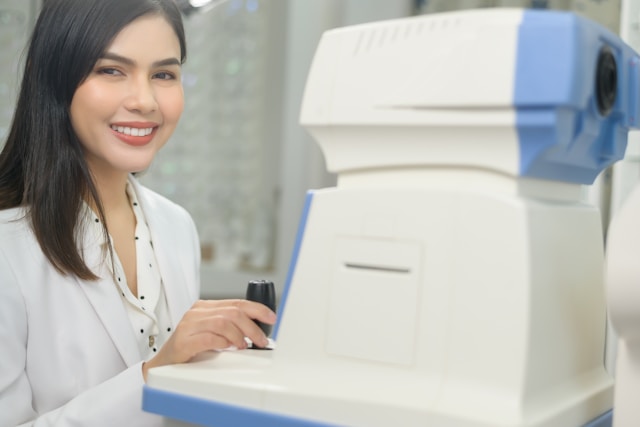What are source oriented medical records?
Ever wonder how the organization of patient data can impact the quality of healthcare delivery? Source-oriented medical records (SOMR) offer a structured approach that organizes information based on the documentation source, such as progress notes, lab reports, physical therapy records, and group information. Unlike problem-oriented medical records, which organize data around a patient's specific health issues, SOMR maintains separate sections for each data type.
This traditional method, whether in paper form or integrated into an electronic health record (EHR) system, ensures that all pertinent medical record information is easily accessible and systematically arranged, enhancing patient care efficiency.
Typical components of source oriented medical documentation
Source oriented medical documentation organizes patient information by the data source, offering a clear and structured format. This method allows healthcare providers to access specific information efficiently and provide high-quality patient care. Here are the typical components included:
- Patient information: The patient records are based on basic details such as the patient's name, age, marital status, and contact information.
- Medical history: A comprehensive overview of the patient's diagnoses, past illnesses, surgeries, and family health history is crucial for understanding the patient's overall health context.
- Progress notes: Daily or periodic entries by healthcare providers documenting the condition, treatment, and patient progress are maintained in chronological order.
- Physician orders: Doctor instructions regarding medications, treatments, and other interventions, ensuring that all directives are recorded and followed.
- Laboratory data: Results from blood tests, imaging studies, and other diagnostic tests, organized for easy reference and analysis.
- Assessment and treatment plans: Detailed plans and evaluations, including the initial assessment and subsequent updates, outlining the approach to managing the patient's health problems.
- Departmental records: Specific notes and data from various hospital departments, such as physical therapy or radiology, provide a complete view of the patient's interactions with different care areas.
By organizing patient information in this structured manner, source-oriented medical documentation enhances the efficiency and effectiveness of patient care. It ensures that all healthcare providers have easy access to essential data and that there is no duplicated or missed information.
Benefits of source oriented records
Source oriented nursing or general medical records systematically organize patient information, facilitating efficient and effective care. Here are the top three benefits:
Clarity and organization
Patient information, including discharge summaries, initial plans, and family history, is stored separately by type. This separation makes it easier for care providers to find specific data without sifting through unrelated information, ensuring a streamlined process.
Comprehensive documentation
These records include objective data, like physical examination results, and subjective data, such as daily progress notes and physician notes. This ensures thorough documentation of the patient's health status and treatment process, covering all aspects of patient care.
Time efficiency
Although paper documents and charts can be time-consuming, the organized nature of source-oriented records minimizes the time spent searching for information. This enables quicker access to vital health and patient problems, thus streamlining the care process and allowing healthcare professionals to focus more on patient care rather than administrative tasks. This also makes keeping electronic medical records much easier.
By leveraging these benefits, source oriented records enhance patient care's efficiency and effectiveness, improving health outcomes and a more streamlined healthcare process.
Examples of a source oriented patient data
Understanding the practical application of source oriented records can help health professionals appreciate their value in managing patient care. Below are some key examples of how medical records are organized within a source oriented framework, ensuring that every aspect of patient data is easily accessible and systematically arranged.
Medical history
A source oriented medical record documents a patient's medical history in a dedicated section. This includes past illnesses, surgeries, family medical history, and other relevant health information. This organization allows health professionals to quickly access a patient's background, which is crucial for diagnosing and planning treatment.
Progress notes
Various health professionals record progress notes to document the patient's daily or ongoing status. Each caregiver, whether a doctor, nurse, or therapist, logs their observations and actions in separate progress notes, ensuring that each aspect of the patient's care is tracked independently and comprehensively.
Laboratory data
Laboratory data, such as blood tests, imaging results, and other diagnostic information, are stored in their section within a source oriented record. This separation allows for quick reference to test results, diagnosing and monitoring health conditions, and ensuring that critical information is readily available to treat patients effectively.
Treatment plans and orders
Treatment plans and physician orders, including medications, therapies, and other interventions, are documented separately from other medical record sections. This helps ensure that health professionals can quickly review and follow the prescribed treatment process, enhancing the efficiency and accuracy of patient care.
Nursing documentation in source oriented medical records
Nurses play a crucial role in maintaining comprehensive and accurate source-oriented electronic health records. Their documentation ensures that patient care is well-coordinated and that all healthcare providers can access vital information. Here's what nurses typically include:
- Patient assessment: Initial and ongoing evaluations of the patient's condition, including vital signs, physical assessments, and observations, providing a baseline for all further care.
- Nursing progress notes: Daily or shift-based entries documenting the patient's status, responses to treatments, and any changes observed, kept in chronological order to track progress over time.
- Care plans: Detailed plans outlining nursing interventions and expected outcomes, tailored to address the patient's specific needs and updated regularly as the patient's condition evolves.
- Medication administration records (MAR): Logs of all medications administered, including dosages, times, and any observed effects or side effects, ensuring accurate tracking and adherence to physician orders.
- Problem list: A list of identified patient problems or diagnoses, helping to organize care around specific issues and facilitate communication among the healthcare team.
- Patient education and discharge instructions: Document any education provided to the patient or family about managing health conditions and detailed discharge instructions to ensure continuity of care after leaving the hospital.
- Collaboration notes: Records of interactions with other healthcare providers, such as physicians and therapists, to coordinate care and ensure that all team members are informed about the patient's status and treatment plan.
By ensuring thorough and accurate documentation in source-oriented EHRs, nurses contribute significantly to the quality and continuity of patient care. This structured approach helps maintain communication among healthcare providers, improving patient outcomes.
Final thoughts
Implementing source-oriented medical records represents a crucial foundation for effective healthcare delivery. It supports both individual patient care and broader healthcare system efficiency. As healthcare continues to advance, the principles of SOMR adapt and integrate with new technologies while maintaining their core purpose of organized, accessible documentation.
The future of SOMR lies in its ability to bridge the gap between traditional documentation methods and emerging healthcare technologies. Maintaining its fundamental organizational principles while embracing digital innovation, SOMR continues to evolve as an essential tool in healthcare delivery.






.jpg)



.jpg)




.jpg)

.jpg)


.jpg)
.jpg)
.jpg)


.jpg)